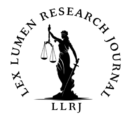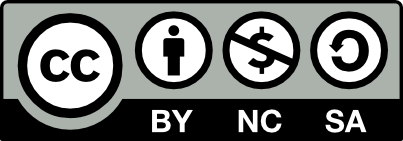Written By Beradar Akash,
Intern- Lex lumen Research Journal,
January 2025
ABSTRACT
Is the corporate veil a deterrent to fraud, or a promoter of transparency and accountability? The doctrine of lifting the corporate veil allows the court to remove a corporation’s artificial legal personality and demand that those responsible for misuse of the corporation are held accountable. It is important to this principle to promote transparency and accountability of the corporation. This blog examines how piercing the corporate veil is a mechanism for preventing fraud and affording corporate responsibility by examining relevant case laws, statutory provisions, and current developments in practice.
INTRODUCTION
This is a landmark case Salomon v. Salomon & Co. Ltd. (1897)[1]The principle of the limited liability of shareholders was established. However, courts may look behind the corporate veil to make individuals responsible when a corporate form is misused as a means of fraud or to evade legal obligations. This doctrine is about ensuring transparency, accountability, and Justice. With the increasing corporate governance scrutiny in today’s era, the knowledge of how courts pierce the veil serves and promotes the prevention of fraud and misconduct and is upheld by case laws, statutory provisions, and evolving regulatory frameworks to integrity of the corporate.[2]
UNDERSTANDING THE DOCTRINE
It means disregarding a company’s separate legal identity to see who is running it. This doctrine is used when the corporate structure is used improperly for illegal or fraudulent purposes. In P.C. Aggarwala vs. Payment of Wages Inspector, M.P. Ors (2005), The Court has applied this principle to combat improper business conduct, tax evasion, or fraud.[3]
LEGAL PROVISIONS
Key statutes empower courts to lift the corporate veil:
- Companies Act, of 2013 (India): Sections 7(7), 251, and 339 prosecute those who practice fraudulent conduct under corporate cover.
- Economic Crime and Corporate Transparency Act 2023 (UK): Companies House gives powers to grants to scrutiny company data and applies penalties, improving corporate governance.[4]
- Corporate Transparency Act (USA): It mandates disclosure of beneficial ownership to prevent the concealment of illegal activity.
THE CORPORATE VEIL: A SHIELD OR A SWORD?
The corporate veil recognizes a corporation separated from the separate liability of its shareholders. But this protection can be abused as a sword to take advantage of legal loopholes or as a shield for fraud, tax evasion, and illegal practice. Courts may pierce the corporate veil to expose acts done in the corporate name of wrongdoing and hold individuals responsible. Effective between the two extremes of protecting lawful business interests and maintaining that this shall not be abused the corporate structures generate a balance between protecting legitimate business interests and safeguarding public trust.[5]
CIRCUMSTANCES FOR LIFTING THE CORPORATE VEIL
The lifting of the corporate veil is classified into two primary categories:
- Statutory Provisions
- Judicial Pronouncements
Various laws empower courts to disregard the separate legal personality of a corporation:
Sections 34 & 35 of the Companies Act, 2013: Liability for misstatements in prospectus.
Section 39: Liability regarding the giving away of securities.
Section 12: It prohibits fraudulent use of the company’s name.
Sections 73 & 76: Regarding deposits received in violation of the Act.
Section 216: It enables inspecting ownership for spotting suspicious behavior.
Section 339: Brought under the fraudulent trading laws during winding up.
Liabilities under other Statutes are imposed on violation of ultra vires acts, environmental regulations, and tax evasion.[6]
Judicial Pronouncements
Fraud, illegality, and wrongful conduct are the occasions where courts intervene. Various cases such as State of Rajasthan vs of Gotan Lime Stone Khanij Udyog Private Limited; State of Karnataka vs of J.: Jayalalitha, ArcelorMittal India Private Limited vs and of Satish Kumar Gupta establish that judicial discretion discloses through the veil to secure justice as well as responsibility.
MISUSE OF THE CORPORATE VEIL
Corporations may misuse their separate legal personality to:
- Evade taxes and liabilities.
- Commit fraud.
- Creating sham entities to defraud creditors.
- Exemplary are the situations that necessitate judicial vigilance to restrain harm.
EXAMPLES OF CORPORATE VEIL MISUSE
- Tax Evasion: Using shell companies to avoid taxes.
- Fraudulent Transactions: Evasion of creditor claims with diverted assets.
- Regulatory Evasion: By creating entities to get around reporting requirements.
THE CONSEQUENCES OF THE CORPORATE VEIL
When courts lift the veil, individuals face:
Legal Liability: Corporate debts and actions for which one’s accountability.
Penalties: False acts, or acts, for which an individual would be subject to fines and criminal charges.
Reputational Damage: Loss of confidence and confidence.
CONTEMPORARY DEVELOPMENTS
The recent reforms in corporate governance reflect global efforts to introduce transparency. The UK’s Economic Crime and Corporate Transparency Act 2023 put enforcement powers within the controlling hands of Companies House, including the power to investigate and reject fraudulent filings. The act requires directors and beneficial owners to comply with an identity verification. The Corporate Transparency Act passed in the USA requires corporations to disclose information about beneficial ownership, to make it more visible to whom corporations are owned, and to help curb financial crimes such as tax evasion and money laundering.[7]
PROMOTING TRANSPARENCY AND ACCOUNTABILITY
Casting off the corporate veil is a step to ensure the misuse of limited liability is deterred because limited liability is a privilege, not a right, for unethical gain. When an individual uses corporate structures to perpetrate fraud or escape responsibility, courts step in. The judiciary attributes liability directly to wrongdoers and preserves corporate integrity from misuse. Together with legislative reforms, these measures reinforce the commitment of corporations to being accountable and establish clear rules within the legal framework to protect stakeholders’ interests while enforcing responsible business conduct[8].
SIGNIFICANT CASE LAWS
- State of Rajasthan vs. Gotan Lime Stone Khanij Udyog Pvt. Ltd 2016.: Veil-lifting to expose tax evasion and public interest violations is permitted by the Supreme Court because all must be transparent.[9]
- State of Karnataka vs. J. Jayalalithaa 2014: Corporate character was disregarded when used for fraud or illegality and justice was preferred to formality, the court said.[10]
- ArcelorMittal India Private Limited vs. Satish Kumar Gupta 2018: Piercing the veil is an exception to limited liability, the Supreme Court said, and when necessary, the Court attributes the acts of a company to its controllers.[11]
LIFTING THE CORPORATE VEIL: A CALL TO ACTION
To fight corporate fraud, regulators must increase transparency laws, and give investigative bodies enough resources. Robust compliance systems should be adopted by companies that should prioritize ethical governance, while stakeholders such as investors and consumers should engage in responsible practices. Real-time reporting and strict penalties both prevent and deter wrongdoing and effective identity verification. Global efforts have been seen in laws like the UK’s Economic Crime and Corporate Transparency Act and the USA’s Corporate Transparency Act respectively. A collaborative approach does not allow corporate form exploitation for illicit gain.
CONCLUSION
The rule of lifting the corporate veil seeks to do justice by making those responsible for corporate misuse, fraud, or illegality liable. Landmark cases such as Salomon v. Salomon & Co. Balanced the privilege of limited liability with responsibility. Contemporary transparency laws surrounding corporate existence make this doctrine a more relevant entity to live and defend. Piercing the corporate veil serves as a vital mechanism to deliver fairness and accountability, secure commerce, uphold public trust, and create an open business environment throughout the globe.
[1] Salomon v. Salomon & Co. Ltd., [1897] A.C. 22 (H.L.), https://www.lawteacher.net/cases/salomon-v-salomon.php (last visited Jan. 17, 2025).
[2] Lifting the Corporate Veil in India, Manupatra, https://articles.manupatra.com/article-details/Lifting-the-Corporate-Veil-in-India (last visited Jan. 17, 2025).
[3] P.C. Aggarwala v. Payment of Wages Inspector, M.P. Ors., (2005), https://indiankanoon.org/doc/1425050/ (last visited Jan. 17, 2025).
[4] Companies House Has Been Given Teeth, and Firms Must Adapt Swiftly, The Times, https://www.thetimes.com/uk/law/article/companies-house-has-been-given-teeth-and-firms-must-adapt-swiftly-s9nv23sfd?utm (last visited Jan. 17, 2025).
[5]The Corporate Veil, Gibson, Dunn & Crutcher LLP, https://www.gibsonsheat.com/Articles/Corporate%2B%2BCommercial/The%2BCorporate%2BVeil.html?utm (last visited Jan. 17, 2025).
[6] Companies Act, 2013, No. 18 of 2013, Ministry of Corporate Affairs, https://www.mca.gov.in/Ministry/pdf/CompaniesAct2013.pdf (last visited Jan. 17, 2025).
[7] Analysis of Standard of Proof for Lifting of the Corporate Veil in Cases of Fraud, Mondaq, https://www.mondaq.com/india/corporate-and-company-law/1259382/analysis-of-standard-of-proof-for-lifting-of-the-corporate-veil-in-cases-of-fraud?utm (last visited Jan. 17, 2025).
[8] Doctrine of Lifting of Corporate Veil: An Analysis, iPleaders, https://blog.ipleaders.in/doctrine-of-lifting-of-corporate-veil-an-analysis/ (last visited Jan. 17, 2025).
[9] State of Rajasthan v. Gotan Lime Stone Khanij Udyog Pvt. Ltd., (2016), https://indiankanoon.org/doc/50527052/ (last visited Jan. 17, 2025).
[10] State of Karnataka v. J. Jayalalithaa, (2014), https://indiankanoon.org/doc/135095591/ (last visited Jan. 17, 2025).
[11] ArcelorMittal India Pvt. Ltd. v. Satish Kumar Gupta, (2018), https://indiankanoon.org/doc/161012846/ (last visited Jan. 17, 2025).


